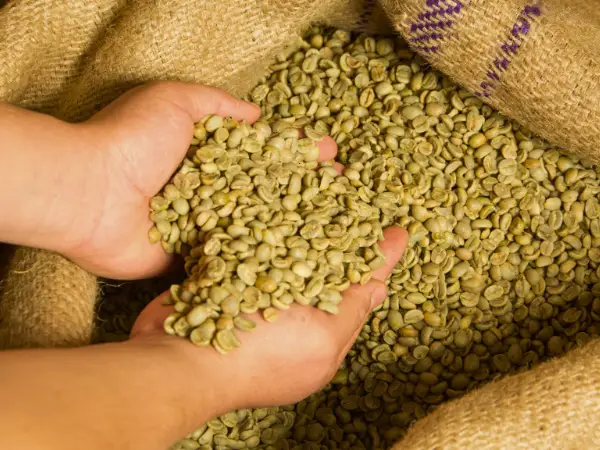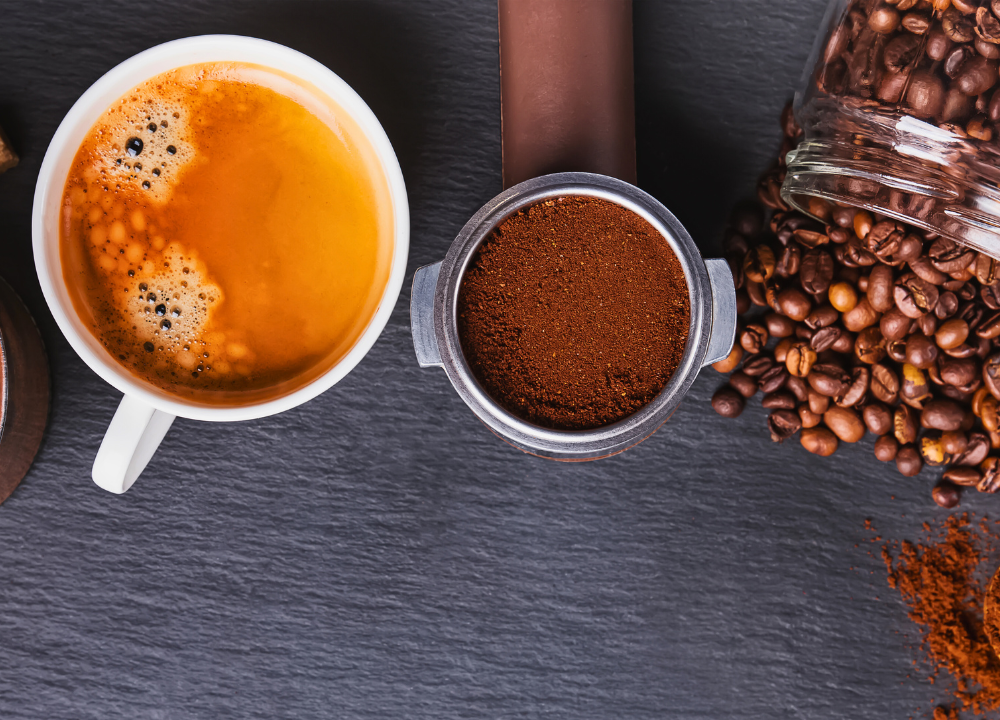Coffee beans become oily due to prolonged roasting, which releases the natural oils inside. This often indicates a darker roast.
Oily coffee beans are a common sight, particularly among those who prefer a rich, intense flavor. These beans undergo a longer roasting process, causing the oils to rise to the surface. The presence of oil can affect both the aroma and taste, often resulting in a bolder cup of coffee.
Causes Of Oily Coffee Beans
Understanding the causes of oily coffee beans can help you select the right beans for your taste preferences.
The Role Of Roasting In Bean Oil Production
Roasting plays a crucial role in making coffee beans oily. When coffee beans are roasted, heat causes the oils within the beans to rise to the surface. The longer the roasting process, the more oil appears.
Dark Roasts tend to be oilier than light roasts because they undergo a longer roasting period. Here are some important points to consider:
- Light Roast: Minimal oil on the surface, retains more of the bean’s original flavors.
- Medium Roast: Balanced oil content, a mix of original flavors and roasted flavors.
- Dark Roast: High oil content, dominated by roasted flavors.
Below is a table summarizing the oil content based on roasting levels:
| Roast Level | Oil Content |
|---|---|
| Light Roast | Low |
| Medium Roast | Moderate |
| Dark Roast | High |
The longer the roasting process, the more cell walls in the beans break down, allowing oils to seep out. This is why dark roasts are typically oilier than lighter roasts.
Understanding The Chemical Composition Of Coffee Beans
The chemical composition of coffee beans also affects oiliness. Beans contain various compounds, including lipids (fats), carbohydrates, proteins, and more.
The key components contributing to oiliness are:
- Lipids: These are natural oils present in the coffee beans.
- Proteins and Carbohydrates: They can influence how oils are released during roasting.
Here’s a breakdown of the major components:
| Component | Contribution to Oiliness |
|---|---|
| Lipids | Primary source of oil |
| Proteins | Moderate influence |
| Carbohydrates | Minimal influence |
Lipids are the main contributors to the oiliness of coffee beans. During roasting, these lipids move to the bean’s surface, making it appear oily. The amount of lipids varies with the type of coffee bean.
How Bean Origin Affects Oil Content
The origin of the coffee bean can also impact its oil content. Different regions produce beans with varying levels of natural oils. Factors such as climate, soil, and altitude play a role.
Here are some examples:
- Ethiopian Beans: Generally have a balanced oil content, offering a mix of fruity and floral notes.
- Brazilian Beans: Often have higher oil content, providing a richer, nuttier flavor.
- Colombian Beans: Known for their medium oil content, delivering a well-rounded flavor.
Below is a table summarizing oil content based on bean origin:
| Origin | Oil Content |
|---|---|
| Ethiopia | Medium |
| Brazil | High |
| Colombia | Medium |
Climate affects the growth and oil content of beans. For example, beans grown in warmer climates usually have higher oil content. Soil composition also influences the oil levels in coffee beans. Rich, nutrient-dense soil tends to produce oilier beans.

Is Oiliness A Sign Of Quality?
Understanding the causes and implications of oily coffee beans can enhance your coffee experience. Is oiliness a sign of quality? Let’s dive into the details.
Evaluating Freshness: Oily Vs. Non-oily Beans
Freshness in coffee beans can be assessed by their appearance. Oily beans are usually darker and shinier. This oiliness comes from the natural oils inside the beans, which surface during the roasting process. Here are some key points to consider:
- Dark roast beans: More likely to be oily due to longer roasting times.
- Light roast beans: Typically dry, as they are roasted for a shorter period.
Let’s compare the characteristics of oily and non-oily beans:
| Characteristic | Oily Beans | Non-Oily Beans |
|---|---|---|
| Roast Level | Dark | Light to Medium |
| Appearance | Shiny | Dry |
| Freshness | Can be fresh or stale | Generally fresh |
Oily beans do not necessarily indicate freshness. They could be fresh or stale. Non-oily beans are generally fresher, especially if they are light or medium roast.
Consumer Perception Of Oily Coffee Beans
Consumer perception of oily coffee beans varies. Some people believe oily beans indicate freshness and quality. Others think they are a sign of over-roasting or staleness. Here are some common perceptions:
- Positive perception: Shiny beans look fresh and appealing.
- Negative perception: Oily beans can clog grinders and leave residue.
Let’s look at what consumers might think based on their coffee preferences:
| Consumer Type | Perception |
|---|---|
| Espresso Lovers | Prefer oily beans for richer flavor. |
| Pour-Over Enthusiasts | Lean towards non-oily beans for cleaner taste. |
Perceptions can be influenced by past experiences and personal preferences. There’s no right or wrong; it boils down to individual taste.
Oiliness And Flavor Profile: What To Expect
Oiliness in coffee beans directly affects the flavor profile. Oily beans usually come from darker roasts, which have a bolder taste. Here’s what you can expect:
- Richness: Oily beans often deliver a more intense and robust flavor.
- Bitterness: Dark roasts can be more bitter, appealing to some but not all.
- Complexity: The oils can add depth and complexity to the coffee.
Let’s break down the flavor expectations:
| Roast Level | Oiliness | Flavor Profile |
|---|---|---|
| Light Roast | Minimal | Fruity, Floral |
| Medium Roast | Slight | Balanced, Nutty |
| Dark Roast | High | Bold, Bitter |
Oily beans are best suited for those who enjoy a strong, bold cup of coffee. Non-oily beans are preferred by those who like a cleaner, more nuanced flavor.
Impact Of Oily Coffee Beans On Brewing
Understanding the impact of oily coffee beans on brewing can help you achieve the perfect cup.
How Oil Affects Extraction During Brewing
Oily coffee beans can significantly influence the extraction process during brewing. The oils on the surface of the beans can alter the flavor profile and the overall experience of your coffee. Here are some key points:
- Flavor Alteration: The oils can enhance the richness and depth of the coffee, leading to a bolder taste.
- Clogging Issues: Oily beans can clog grinders and espresso machines, affecting the uniformity of the grind and water flow.
- Consistency: The presence of oil can lead to inconsistencies in extraction, causing some cups to be over-extracted or under-extracted.
Table: Comparison of Oily vs. Non-Oily Beans in Brewing
| Aspect | Oily Beans | Non-Oily Beans |
|---|---|---|
| Flavor Profile | Rich, Bold | Clean, Bright |
| Grinder Performance | May Clog | Consistent |
| Extraction Consistency | Variable | Stable |
Brewing with oily beans requires some adjustments. You might need to clean your grinder more frequently or adjust your brewing method to accommodate the oils.
Cleaning And Maintenance Of Coffee Equipment With Oily Beans
Using oily coffee beans means more maintenance for your coffee equipment. The oils can build up, leading to potential clogging and performance issues. Here’s how to keep your equipment in top shape:
- Regular Cleaning: Clean your grinder and espresso machine after every use to prevent oil buildup.
- Use Grinder Cleaning Pellets: These pellets help remove oils and residues from your grinder.
- Monthly Deep Clean: Perform a deep clean of your coffee equipment at least once a month.
- Disassemble your grinder and remove any visible coffee grounds.
- Use a brush to clean the burrs and other parts.
- Run cleaning pellets through the grinder.
- Wipe down all parts with a damp cloth.
- Reassemble the grinder and run a small batch of beans to flush out any remaining residue.
| Equipment | Frequency | Cleaning Method |
|---|---|---|
| Grinder | After every use | Brush and wipe |
| Espresso Machine | Weekly | Flush with water |
| Deep Clean | Monthly | Disassemble and clean thoroughly |
Consistent maintenance ensures your equipment runs smoothly and extends its lifespan, even with the use of oily beans.
Common Misconceptions About Oily Coffee Beans
This oiliness can lead to various assumptions about the quality and freshness of the beans. Understanding common misconceptions about oily coffee beans helps in choosing the right beans for your perfect cup of coffee.
Are Oily Beans Always Over-roasted?
One common belief is that oily coffee beans are always over-roasted. This is not necessarily true. While darker roasts tend to be oilier because the roasting process brings oils to the surface, it’s not the sole reason for oiliness.
Here are some factors that can cause oiliness:
- Roast Level: Darker roasts often have more surface oil.
- Bean Variety: Some beans naturally have more oil.
- Storage Conditions: Poor storage can bring oils to the surface.
To summarize, not all oily beans are over-roasted. The roasting process and bean variety play significant roles.
The Myth Of Oiliness And Staleness
Another myth is that oily beans are stale. This belief stems from the idea that oils on the surface mean the beans have been exposed to air for too long. While oils can oxidize and go rancid, oiliness alone does not indicate staleness.
Consider these points:
| Oily Beans | Staleness Indicator |
|---|---|
| Dark Roasts | Not necessarily stale |
| Bean Variety | Depends on storage |
| Storage Conditions | Needs proper care |
Properly storing beans in airtight containers can prevent staleness, regardless of oiliness.
Differentiating Between Natural Oils And Defects
It’s crucial to differentiate between natural oils and defects in coffee beans. Natural oils result from the roasting process and are often seen in high-quality beans. Defects, however, can indicate poor quality.
Here’s how to tell the difference:
- Natural Oils: Even distribution, common in dark roasts.
- Defects: Patchy oil spots, inconsistent texture.
- Smell: Fresh oils have a pleasant aroma; defects may smell off.
Recognizing these differences ensures you enjoy the best coffee experience. Always choose beans with a consistent oil layer and a fresh smell.

